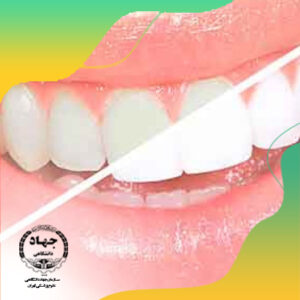Snakes by Color. This can either be single or paired. We have put the snake into a large plastic box in a cool place and will use your advice to help it finish sloughing. For example, a baby corn snake will typically shed more frequently than a baby garter . For more tips on aiding your snake in the shedding process, read on! Orchid bark tends to hold more humidity than other products. Thanks.". The bright color is a way for the snake to warn its enemies to stay away, as it would rather persuade its predators not to attack, than have to defend itself, expelling venom and energy. The skin of a snake is different from the skin of a mammal (including us) in that it does not grow as the animal grows. Even though the footage is speeded up the video still takes 10 minutes. At this stage of the shedding process, handling or feeding ball pythons is not a recommended action. At first, you may also notice that your snake's belly appears to be a pinkish color. This is due to a lubricant secreted underneath the outer layer of skin to assist with the shedding process. It comes down to your opinion and personal preference. Snake Shedding. his temperatures and humidity are always at correct levels and his first shed shed great. Some people, especially artists, use snake sheds to be able to turn them into a work of art to be displayed. The process is called ecdysis, which simply means molting or shedding an outer layer. Typically, the skin will break at some point around the python's body, which allows some portion of it to slip off. Once the skin is ready to come off however, the snake is usually able to wriggle out of it in anywhere from a few minutes to a couple of hours. Shedding for beginners A good basic introduction to sheddingBAD/STUCK SHED (Here's how to fix it)https://www . Copyright WholeEarthEducation.com. This is roughly the halfway point. The diminished vision of the snake is one of the reasons his activity level slows and his body temperature goes down. It is quite easy to incubate snake eggs, but reptile breeding is a big commitment. This is because of the snake much loosen the skin, making it more robust to come off in one piece. Keeled scales generally have a ridge that runs along the center, and it can help you in identification. Its eyes turn a cloudy, bluish color. But snake skin has a limited capacity for growth and enlargement. By looking closely at the scales, we can determine whether they are. Like all other reptiles, milk snakes shed their old skin. Missing a meal is no biggie for the snake. For more snake facts check this post. wikiHow marks an article as reader-approved once it receives enough positive feedback. Then try to find out related patterns on the skin. It is normal during the shed for snakes to skip meals, as well as to become more shy and reclusive. It takes time for the outer layer of skin to detach from the layer underneath. It is important to note that this is not the same as a snake shedding its skin, which is a completely different process. Only 10 questions to challenge your mind All Rights Reserved. However, if you are concerned that your snake may be shedding too much skin, it is important to note that shedding is not necessarily a sign of disease. Ensure that your snake can get its complete body . At the next point, investigate the size of the shed skin. While not as common as the previous two causes, skin infections and injuries may be other reasons why your snake isn't shedding properly. Some snakes are able to shed their skin in water. The bottom line is, theres no concrete right or wrong answer for snakes as a whole. Seven to 10 days. Purchase an electronic hydrometer to keep track of . Refusing food Not all snakes experience this, but some certainly will. It is located at the end of the belly scale on the body of the snake. Snakes constantly grow new skin cells and must shed the old ones. The snake tail is at the left and head on the right of the anal plate. Bright Colors. But just after shedding their skin, the shed has moisture in and is very flexible. Now you need to look at keeled scales and smooth scales. Your snake may snap into the familiar S curve when you open the cage, meaning it is prepared to strike. Some snakes easily adapt to being handled with few signs of stress, while others will be more timid during the process. Why would it do that. Weather can also play an important part in the shedding frequency. Working from within the skin, flexible ribs act like small arms and legs; thats the thing that distinguishes them from different reptiles and their amphibian ancestors. The Arizona Black Rattlesnakes are born with brown . Snakes may dislike being handled and, if handled too much, a snake may learn to think of you as a predator. Youll see an outline of where the scales should be, but that area will be dull and leathery feeling. The shedding cycle for a snake happens when the old skin will no longer stretch any further, the snake naturally loosens the skin, this causes the eyes to go cloudy blue and the colouration of the snake to go dull in colour. (Important Facts), How To Use Cable Snake? Having rough surfaces like bark or rocks can help the process go more smoothly and quickly. This is crazy, we have never seen this before! Close-up of shed skin. This is in contrast to its normally cream color. Learn how your comment data is processed. The skin will begin to dull just before shedding. Snakeskin and scales can have varying patterns and color formations, providing protection via camouflage from predators. But, for the past 5 days, we've seen a, "This is the first time my ball python has shown signs of getting ready to shed for me, and we have had him/her for, "At first I didn't know what to do when my snake started shedding and there were not many vets in my area who know, "This is my first time owning a snake. You or your vet may need to remove any remnants of the old skin that remain. The amount of time the whole process takes depends on the species, the age of the animal, it's physical condition, it's living conditions and other various factors. How Long Does It Take For A Snake To Shed Its Skin? As snakes grow, they shed the outer layer of their skin. This causes some health problems and a lot of irritation for your corn snake. The eyes clear and the snake rubs its head on something abrasive like a rock or a log to create a rip the outer layer of its skin, around the mouth and nose. 1. Common Problems in Pet Snakes. -Skin changes color and gets hazy. Get expert advice to help your pet live its best life, Preventing Incomplete Shedding Problems in Reptiles, Kingsnakes and Milk Snakes: Species Profile, Spectaculitis and Spectacular Dysecdysis: A Histologic Description. Make sure to read a quality guide, and perhaps even join a group or two that are specific to your breed of snake. Yet another of key ball python shedding signs is the one in which the snake's eyes become dull. Ideally, the whole skin comes off in one piece. You can also add a. There are definitely some things you should NOT do with a stuck shed. Expert Interview. Though the number may increase or decrease with the age and size of the corn snake. The step-by-step process and forewarning about certain things will help me be. The shedding of the skin by a snake is a process done, to help in the growth of the snake. . On average, a snake sheds its skin within one to two weeks. Blink Media LLC 120 Madeira Drive NE STE 220, Albuquerque, New Mexico, 87108 Email: Write CSS OR LESS and hit save. Humans, for example, shed millions of skin cells a day but because the skin cells are microscopic and it is a continual process, it is not generally very noticeable. Usually, shedding problems are caused by a lack of humidity, but youll want an exam to rule out other causes. Although this is a completely natural process, there are certain steps that you must take to care for a shedding snake. Young snakes that are growing rapidly shed frequentlyevery few weekswhile adult snakes shed less often, sometimes only a few times a year or less. Snakeskin may either refer to the skin of a live snake, the shed skin of a snake after molting, or to a type of leather that is made from the hide of a dead snake. This is when the skin is scraped away from the body to reveal the inside of the snakes body cavity. These are signs that the snake is scared and stressed. Should you feed your snake after it sheds? You can also use an alarm clock or a timer to tell you when to start the bath, but be sure to set it to a time that is not too early or too late. If it is trying to wriggle out of its skin right after it has eaten, the process can cause it to regurgitate. 2 foot 6 inch snake acting unusually around the edge of the pond. Youve probably come across dried natural design wonders, like wasps nuts or mantis cocoons, when outside hiking or cleaning your garden. Links to the supplies you'll need:Necklace (Pendant) Kits:Circle: https://amzn.to/2MNcDhwSquare: https://amzn.to/2Wjm6jNRectangle: https://amzn.to/2PmTVirSkinny Rectangle: https://amzn.to/2JlQmp2Owl: https://amzn.to/2JmhCngDouble-sided Spinning Moon: https://amzn.to/31P6m9kBookmark Kits: https://amzn.to/2PgxU4KEarring Kits: https://amzn.to/2MKq69ODiamond Glaze: https://amzn.to/2NiV73YNecklace Cords: https://amzn.to/2PjSWPWSNAKE DISCOVERY MERCHhttps://teespring.com/stores/snake-discoverySNAKE DISCOVERY PATREONhttps://www.patreon.com/snakediscoveryWe love fan mail!Snake DiscoveryP.O. Generally, the shed skin will appear longer than the actual size of the snake, but you can check potential snake species based on the length in your list. Sign up for wikiHow's weekly email newsletter. If you decide to offer food to the snake, it can decide for itself if it wishes to eat but if it chooses not to, then remove the food to avoid rotting and bacterial problems. (Fully Explained Inside!). This site uses Akismet to reduce spam. Defensiveness Sometimes it can become more defensive. It may bite, but only to protect itself, not to eat. i have about a year old milk and he is in the process of shedding. In captivity, offering food will only stress the snake out, which is unhealthy. References Eye color, pupil shape, location on the face, and eye size should all be noted. Snakes can shed their skin as often as once a month, although it is usually only two to four times a year. If it were, you wouldnt see a baby snake double in size over the course of a month without being in a state of constant shed. Snakes are covered with scales, which are hardened folds in the epidermal layers of the skin. leave it up to the snake to shed themselves, or you can do it yourself!. CTRL + SPACE for auto-complete. How to Provide a Supportive Environment for a Shedding Snake, {"smallUrl":"https:\/\/www.wikihow.com\/images\/thumb\/d\/d8\/Care-for-a-Shedding-Snake-Step-1-Version-3.jpg\/v4-460px-Care-for-a-Shedding-Snake-Step-1-Version-3.jpg","bigUrl":"\/images\/thumb\/d\/d8\/Care-for-a-Shedding-Snake-Step-1-Version-3.jpg\/aid952352-v4-728px-Care-for-a-Shedding-Snake-Step-1-Version-3.jpg","smallWidth":460,"smallHeight":345,"bigWidth":728,"bigHeight":546,"licensing":"
License: Creative Commons<\/a> License: Creative Commons<\/a> License: Creative Commons<\/a> License: Creative Commons<\/a> License: Creative Commons<\/a> License: Creative Commons<\/a> License: Creative Commons<\/a> License: Creative Commons<\/a> License: Creative Commons<\/a> License: Creative Commons<\/a>
\n<\/p>
\n<\/p><\/div>"}, {"smallUrl":"https:\/\/www.wikihow.com\/images\/thumb\/d\/d0\/Care-for-a-Shedding-Snake-Step-2-Version-3.jpg\/v4-460px-Care-for-a-Shedding-Snake-Step-2-Version-3.jpg","bigUrl":"\/images\/thumb\/d\/d0\/Care-for-a-Shedding-Snake-Step-2-Version-3.jpg\/aid952352-v4-728px-Care-for-a-Shedding-Snake-Step-2-Version-3.jpg","smallWidth":460,"smallHeight":345,"bigWidth":728,"bigHeight":546,"licensing":"
\n<\/p>
\n<\/p><\/div>"}, {"smallUrl":"https:\/\/www.wikihow.com\/images\/thumb\/4\/47\/Care-for-a-Shedding-Snake-Step-3-Version-3.jpg\/v4-460px-Care-for-a-Shedding-Snake-Step-3-Version-3.jpg","bigUrl":"\/images\/thumb\/4\/47\/Care-for-a-Shedding-Snake-Step-3-Version-3.jpg\/aid952352-v4-728px-Care-for-a-Shedding-Snake-Step-3-Version-3.jpg","smallWidth":460,"smallHeight":345,"bigWidth":728,"bigHeight":546,"licensing":"
\n<\/p>
\n<\/p><\/div>"}, {"smallUrl":"https:\/\/www.wikihow.com\/images\/thumb\/4\/42\/Care-for-a-Shedding-Snake-Step-4-Version-3.jpg\/v4-460px-Care-for-a-Shedding-Snake-Step-4-Version-3.jpg","bigUrl":"\/images\/thumb\/4\/42\/Care-for-a-Shedding-Snake-Step-4-Version-3.jpg\/aid952352-v4-728px-Care-for-a-Shedding-Snake-Step-4-Version-3.jpg","smallWidth":460,"smallHeight":345,"bigWidth":728,"bigHeight":546,"licensing":"
\n<\/p>
\n<\/p><\/div>"}, {"smallUrl":"https:\/\/www.wikihow.com\/images\/thumb\/2\/27\/Care-for-a-Shedding-Snake-Step-5-Version-2.jpg\/v4-460px-Care-for-a-Shedding-Snake-Step-5-Version-2.jpg","bigUrl":"\/images\/thumb\/2\/27\/Care-for-a-Shedding-Snake-Step-5-Version-2.jpg\/aid952352-v4-728px-Care-for-a-Shedding-Snake-Step-5-Version-2.jpg","smallWidth":460,"smallHeight":345,"bigWidth":728,"bigHeight":546,"licensing":"
\n<\/p>
\n<\/p><\/div>"}, {"smallUrl":"https:\/\/www.wikihow.com\/images\/thumb\/1\/13\/Care-for-a-Shedding-Snake-Step-6-Version-2.jpg\/v4-460px-Care-for-a-Shedding-Snake-Step-6-Version-2.jpg","bigUrl":"\/images\/thumb\/1\/13\/Care-for-a-Shedding-Snake-Step-6-Version-2.jpg\/aid952352-v4-728px-Care-for-a-Shedding-Snake-Step-6-Version-2.jpg","smallWidth":460,"smallHeight":345,"bigWidth":728,"bigHeight":546,"licensing":"
\n<\/p>
\n<\/p><\/div>"}, {"smallUrl":"https:\/\/www.wikihow.com\/images\/thumb\/1\/13\/Care-for-a-Shedding-Snake-Step-7-Version-2.jpg\/v4-460px-Care-for-a-Shedding-Snake-Step-7-Version-2.jpg","bigUrl":"\/images\/thumb\/1\/13\/Care-for-a-Shedding-Snake-Step-7-Version-2.jpg\/aid952352-v4-728px-Care-for-a-Shedding-Snake-Step-7-Version-2.jpg","smallWidth":460,"smallHeight":345,"bigWidth":728,"bigHeight":546,"licensing":"
\n<\/p>
\n<\/p><\/div>"}, {"smallUrl":"https:\/\/www.wikihow.com\/images\/thumb\/d\/df\/Care-for-a-Shedding-Snake-Step-8-Version-2.jpg\/v4-460px-Care-for-a-Shedding-Snake-Step-8-Version-2.jpg","bigUrl":"\/images\/thumb\/d\/df\/Care-for-a-Shedding-Snake-Step-8-Version-2.jpg\/aid952352-v4-728px-Care-for-a-Shedding-Snake-Step-8-Version-2.jpg","smallWidth":460,"smallHeight":345,"bigWidth":728,"bigHeight":546,"licensing":"
\n<\/p>
\n<\/p><\/div>"}, {"smallUrl":"https:\/\/www.wikihow.com\/images\/thumb\/1\/16\/Care-for-a-Shedding-Snake-Step-9-Version-2.jpg\/v4-460px-Care-for-a-Shedding-Snake-Step-9-Version-2.jpg","bigUrl":"\/images\/thumb\/1\/16\/Care-for-a-Shedding-Snake-Step-9-Version-2.jpg\/aid952352-v4-728px-Care-for-a-Shedding-Snake-Step-9-Version-2.jpg","smallWidth":460,"smallHeight":345,"bigWidth":728,"bigHeight":546,"licensing":"
\n<\/p>
\n<\/p><\/div>"}, {"smallUrl":"https:\/\/www.wikihow.com\/images\/thumb\/1\/1a\/Care-for-a-Shedding-Snake-Step-10-Version-2.jpg\/v4-460px-Care-for-a-Shedding-Snake-Step-10-Version-2.jpg","bigUrl":"\/images\/thumb\/1\/1a\/Care-for-a-Shedding-Snake-Step-10-Version-2.jpg\/aid952352-v4-728px-Care-for-a-Shedding-Snake-Step-10-Version-2.jpg","smallWidth":460,"smallHeight":345,"bigWidth":728,"bigHeight":546,"licensing":"
\n<\/p>
\n<\/p><\/div>"}, {"smallUrl":"https:\/\/www.wikihow.com\/images\/thumb\/7\/77\/Care-for-a-Shedding-Snake-Step-11-Version-2.jpg\/v4-460px-Care-for-a-Shedding-Snake-Step-11-Version-2.jpg","bigUrl":"\/images\/thumb\/7\/77\/Care-for-a-Shedding-Snake-Step-11-Version-2.jpg\/aid952352-v4-728px-Care-for-a-Shedding-Snake-Step-11-Version-2.jpg","smallWidth":460,"smallHeight":345,"bigWidth":728,"bigHeight":546,"licensing":"





